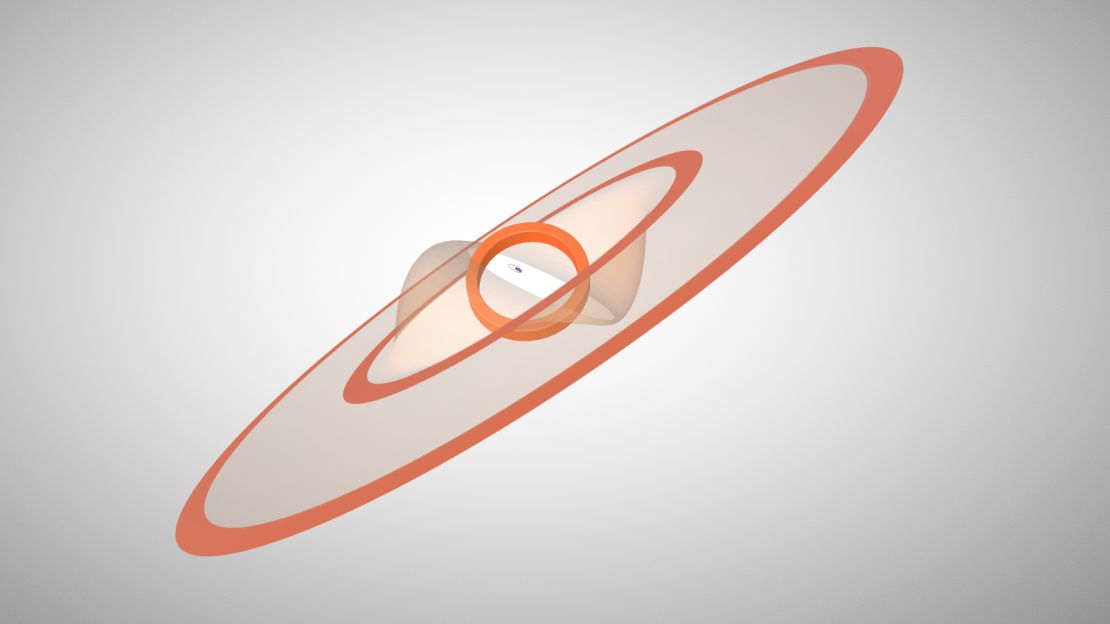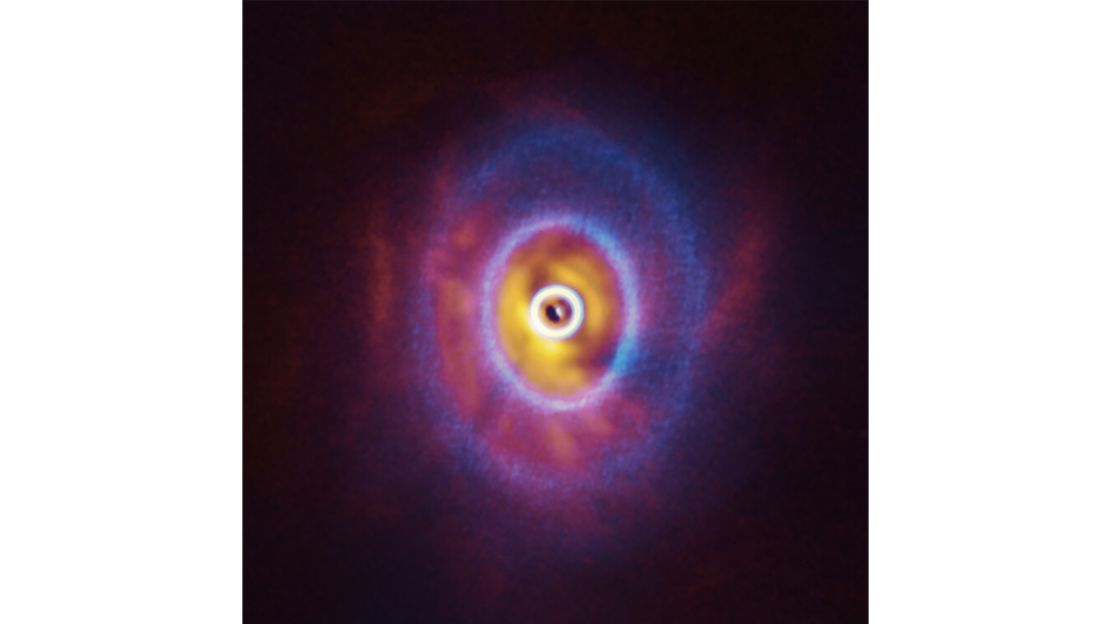When Luke Skywalker emerges from his home at dusk on the planet Tatooine in “Star Wars: Episode IV - A New Hope,” he watches twin suns setting in the sky. The two suns are misaligned, with one lower in the sky than the other.
That could be the view from a potential planet orbiting in the GW Orionis system, according to new research. This system contains three stars and is located 1,300 light-years away from Earth in the Orion constellation.
It starts with a disk: When stars are born from gas and dust, a disk of leftover gas and dust forms around them. This is where planets form, and it’s called the circumstellar disk.
Two international teams of astronomers observed the triple-star system using multiple telescopes, which led the scientists to discover the first direct evidence that stars can rip their planet-forming disk. The end result is a warped disk with tilted rings.
A fractured disk is difficult to picture, considering that our solar system is pretty flat. This means that all of the planets orbit around the sun in the same plane.
But that doesn’t mean it’s normal for other planetary systems, especially disks that form around multi-star systems. And in the case of GW Orionis, the disk is anything but flat.
“Instead it is warped and has a misaligned ring that has broken away from the disc,” said Stefan Kraus, lead study author and associateprofessor of astrophysics at the University of Exeterin the UK, in a statement. “The misaligned ring is located in the inner part of the disc, close to the three stars. The effect is that the view of a potential planet within this ring looks remarkably like that of Tatooine, of Star Wars fame.”
In the study, the researchers also identified where planets may form, or already exist, in this intriguing system. In fact, the innermost ring, which is very tilted, contains enough dust to create 30 planets with the mass of Earth.
A planet formed in this misaligned part of the fractured disk would have a highly unusualorbit. It would likely orbit distantly and at an inclined angle –and possibly even in reverse, which is called a retrograde orbit.
The study published Thursday in the journal Science.
A tilted mystery
To understand the eccentricities of the GW Orionis system, astronomers observed it for more than 11 years to precisely map the orbits of the three stars. The researchers discovered that the stars were misaligned, compared to each other as well as the disk, and that they did not orbit in the same plane.

Astronomers relied on the combined observations of the European Southern Observatory’s Very Large Telescope in Chile, Georgia State University’s Center for High Angular Resolution Astronomy telescope array in California and the Atacama Large Millimeter/submillimeter Array of telescopes in Chile.
When it comes to a triple-star system, two stars typically orbit each other, then that pair and a third star also orbit each other. In this system, the two inner stars, GW Ori A and B, orbit each other at a distance from Earth to the sun, called an AU or astronomical unit. In contrast, the third star, GW Ori C, has a much longer orbit. This outlier orbits the two stars at a distance of eight times that of Earth to the sun, or 8 AU.
The inner ring of the fractured disk is the most misaligned when compared to the three stars and outer rings that surround them. And with the third star’s comparatively longer orbital period, the outermost ring is the largest ever seen in a planet-forming disk.

The observations “revealed the gravitational dance of the three stars in the system,” Kraus said. These observations were also combined with computer simulations to help solve the mystery of what caused the disk fracturing.
The researchers’ simulations showed that the gravitational pull of the misaligned stars could effectively tear the circumstellar disk. This would cause the disk around the three stars to fracture into distinct rings.
But Jiaqing Bi, a graduate student at the University of Victoria in Canada, and his team ran simulations for their study of GW Orionis, published in May, that suggested a second possibility: a planet.

“Our simulations show that the gravitational pull from the triple stars alone cannot explain the observed large misalignment. We think that the presence of a planet between these rings is needed to explain why the disk was torn apart,” said Nienke van der Marel, Bi’s team member and Banting fellow at the department of physics and astronomy at University of Victoria, in a statement.
“This planet has likely carved a dust gap and broken the disk at the location of the current inner and outer rings.”
Future observations of this system, including the European Southern Observatory’s Extremely Large Telescope under construction in Chile and coming online in 2025, could reveal this potential planet.
“Since more than half of stars in the sky are born with one or more companions, this raises an exciting prospect: there could be an unknown population of exoplanets that orbit their stars on very inclined and distant orbits,” said Alexander Kreplin, study coauthor and research fellow at the University of Exeter, in a statement.
Whether it already exists or is still in the process of forming, the planet in this system would be the first observed to orbit three stars, the researchers said.
And it would be just one of many exoplanets found outside of our solar system that resemble the weird and wonderful planets of Star Wars.





































































